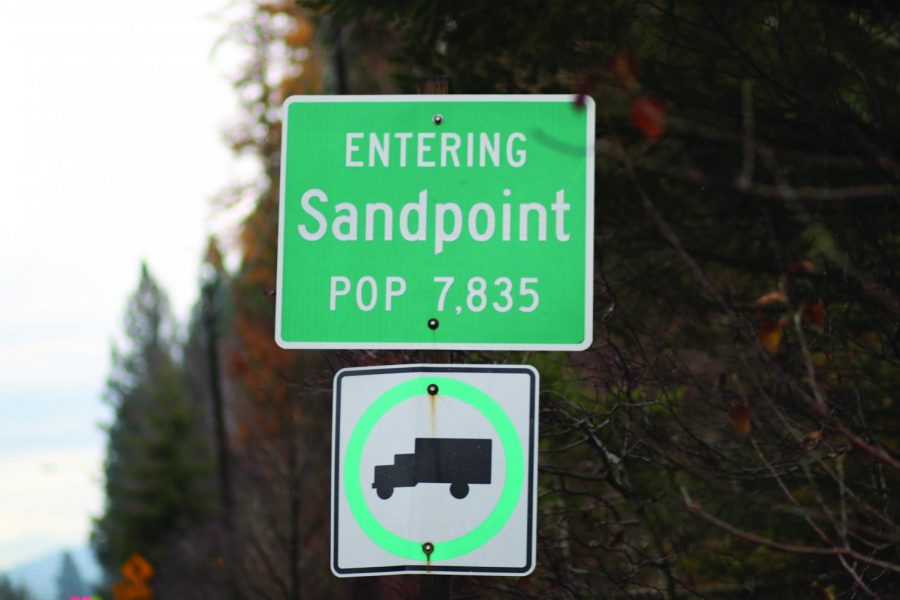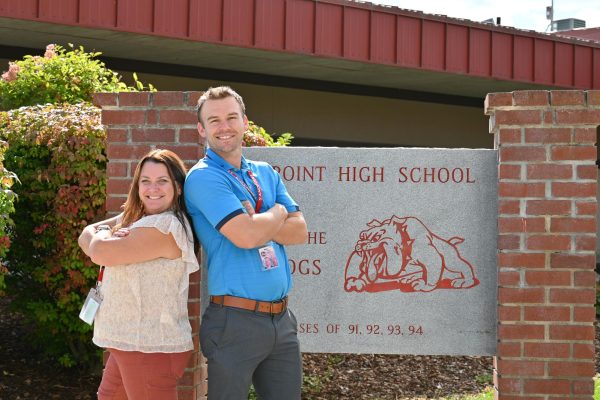GARNERING GROWTH
Sandpoint grows, LPOSD enrollment stabilizes
Renovated stop lights and roundabouts, emerging businesses, increasingly crowded public events: The symptoms of local population growth is noticeable in everyday life.
“There has been more people in Sandpoint, I’ve noticed, but not enough to make it feel really cramped,” senior Catti-Brie Spence said. “I think it’s growing because it’s gorgeous in all seasons, plus it’s a just great place to be.”
With an economy bolstered by tourism, Sandpoint has been a vacation destination for skiers and snowbirds alike for decades. Recent population trends demonstrate that some of these visitors are beginning to make a home of 7B.
As Sandpoint citizenship swells, enrollment in the Lake Pend Oreille School District is growing in tandem. However, the two are generally unrelated.
“The population growth not only in Idaho but in Sandpoint is attributable to retirees,” District Chief Financial Officer Lisa Hals said. “The growth is not in any way tied to families with students.”
If much of the local population increase consists of older adults, how can LPOSD enrollment be increasing?
Hals credits the upward trend to changes being made in the district, such as the new Homeschool Academy, which was founded last year.
“We know we have a lot of homeschool students in this area, a heavy concentration in Idaho and particularly in North Idaho, nationally speaking,” Hals said. “And we’ve been successful [in increasing enrollment] through the Homeschool Academy.”
The Academy’s attendance increased from 17 to 60 this year, and Superintendent Shawn Woodward said the district expects to have 75 students enrolled by the end of the year.
“We will definitely need to find another building…as the space is too small as-is,” Woodward said.
The district’s growth isn’t apparent: attendance was relatively flat at the elementary level and increased slightly at the secondary level. Its significance is the fact that after a nearly decade-long free fall in LPOSD attendance, numbers are beginning to climb again.
Around 2007, district enrollment began to plummet as students transferred to Forrest Bird Charter School, which had just expanded to grades 6-12. The Great Recession came soon after and further decreased numbers.
“There are a lot of studies that show during the economic downturn, that rural America became more rural… and that absolutely was playing out here,” Hals said. “We know that about 30 percent of the students just left the state, primarily going… to more urban centers.”
Accordingly, the most rural schools suffered the greatest blows: Southside Elementary saw a 45 percent decrease in enrollment, Hope Elementary lost 35 percent and Northside Elementary lost 26 percent.
The bankruptcy of Coldwater Creek in 2014 was an additional blow.
“We lost about 100 students, and…at about $7,000 a student, that’s about $700,000 dollars that [the district] didn’t expect losing in state revenue,” Hals said.
Through the Homeschool Academy and other innovative programs such as a career-track focus at Clark Fork High School, LPOSD has gradually sustained its enrollment.
“We’ve gotten back up to where we were before Coldwater declared bankruptcy,” Hals said.

McCalee Cain is a senior and it is her third year on staff. She is the Editor-in-Chief.












